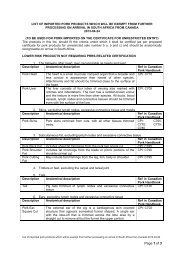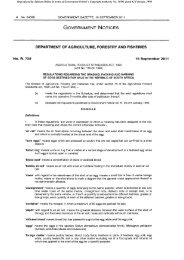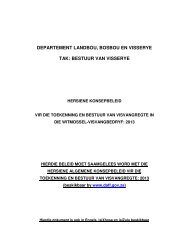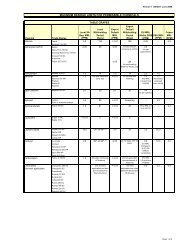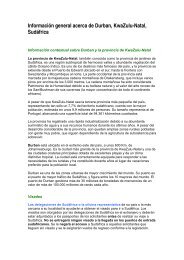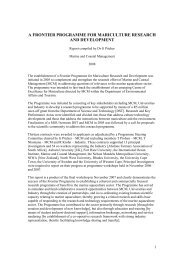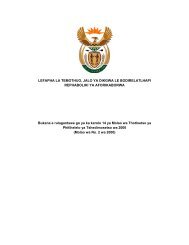You also want an ePaper? Increase the reach of your titles
YUMPU automatically turns print PDFs into web optimized ePapers that Google loves.
Feeding<br />
Octopuses are short-lived but important predators on reef<br />
systems. They prey on a variety of small fish, crabs, rock<br />
lobsters and mussels, and are in turn preyed upon by fishes<br />
such as rock cods, moray eels, cat sharks, grey sharks and<br />
marine mammals such as seals and dolphins.<br />
An octopus attacks its prey from close proximity, grasping<br />
it with its arms and injecting a poisonous substance into it.<br />
Octopuses feeding on mussels will make a small hole in the<br />
shell before injecting the toxin into the animal’s tissues. In some<br />
species of octopus, like the blue-ringed octopus of Australia,<br />
the toxin that is contained in the animal’s poison glands is so<br />
deadly that it is capable of killing a person within minutes!<br />
Octopuses are voracious eaters. Experiments have shown<br />
that they eat an average of 5,2% of their body weight every<br />
day, although this figure can vary between 1 and 21%. The<br />
animals’ high food intake results in rapid growth; an octopus<br />
may grow from 200 g to nearly 6 kg in only nine months. In<br />
keeping with their rapid growth rates, octopuses are short-<br />
lived animals and most breed and die within a year.<br />
Breeding<br />
Octopus vulgaris reaches sexual maturity at a mass of 400 g<br />
but females are usually 900 g. Mating can only take place<br />
between animals of a similar size; if there is a distinct diff e re n c e<br />
in size, the larger one will usually attack and eat the smaller<br />
one. But if contact is made, the male will touch the female<br />
and insert his third arm, which is specially modified to transfer<br />
the sperm, into the female’s mantle cavity. Copulation may<br />
take more than an hour.<br />
The female lays thousands of eggs on the roof and walls of a<br />
small cave. The eggs are oval- shaped, about 1 mm wide and<br />
3 mm long and are attached in bunches. During the incubation<br />
period the female octopus blows water from her funnel over<br />
the eggs to keep them aerated. When the eggs hatch after<br />
3-5 weeks, the female dies. Most cephalopod eggs are richly<br />
laden with yolk and the embryos undergo its complete develop-<br />
ment within the egg case, hatching as miniature adults.<br />
Highly developed senses<br />
One of the most remarkable features of octopuses is that their<br />
eyes are very advanced. With a cornea, lens, iris, pupil and<br />
retina, their eyes resemble the human eye, although it is quite<br />
likely that octopuses’ sight is superior to humans’. This is<br />
because the nerve cells run behind the retina and so octopuses<br />
do not have a ‘blind spot’ as we do where our optic nerve<br />
leaves the eye. Interestingly, octopuses may be taught to<br />
distinguish between objects of different sizes, shapes,<br />
textures and colours and they are capable of learning. For<br />
instance, once they have learnt that anemones sting,<br />
octopuses will not attempt to prey on hermit crabs that have<br />
anemones on their shells.<br />
A growing market for octopuses<br />
Octopuses are a popular bait item and hundreds are caught<br />
along the South African coast at every spring low tide.<br />
Octopus fishers on the east and south coast insert a stick<br />
into a crevice and, when an octopus coils its tentacles<br />
around the stick, remove the animal from its hole.<br />
For many years common and giant octopuses have been<br />
caught in the nets of deep sea trawlers. Increasing demand for<br />
octopus products from European markets has prompted South<br />
African fisheries authorities to consider the biological and<br />
economic viability of a directed octopus fishery. Octopus vulgaris<br />
will probably be the target species of this emerging fishery.<br />
Prospective octopus fishers are talking about developing<br />
plastic pots or using PVC pipes to act as lures for octopuses.<br />
Author: Claire Attwood September 2000<br />
FURTHER INFORMATION:<br />
• Branch, G. and Branch, M. 1981. The Living Shores of Southern Africa . Struik Publishers, Cape Town.<br />
• Payne, A.I.L. and Crawford, R.J. (Eds). 1989. Oceans of Life off Southern Africa. Vlaeberg Publishers, Cape Town.<br />
RELATED FACTSHEETS:<br />
• Cephalopods • Fishing Industry<br />
Classification:<br />
PHYLUM: Mollusca<br />
CLASS: Cephalopoda<br />
GENUS: Octopus<br />
SPECIES: vulgaris<br />
COMMON NAME: Common octopus<br />
For more information, please contact: The Coastal Management Office, Marine and Coastal Management, Department of Environmental Affairs and Tourism, Private Bag X2,<br />
Roggebaai 8012, Cape Town, South Africa. Tel: +27 (0)21 402-3208 Fax: +27 (0)21 418-2582 e-mail: czm@mcm.wcape.gov.za Website: http://sacoast.wcape.gov. z a





